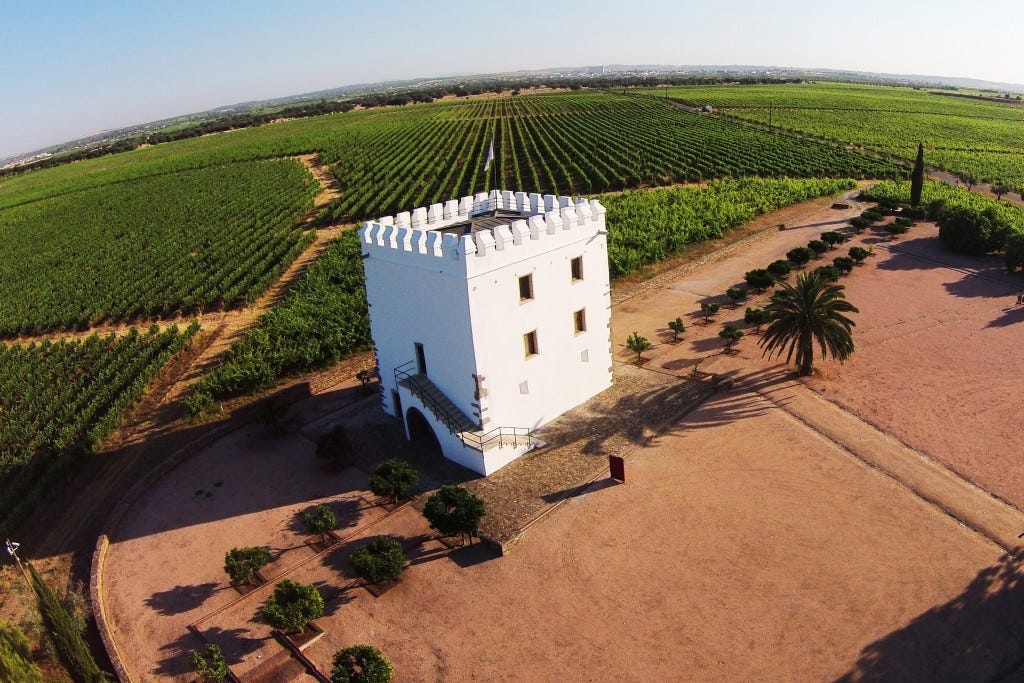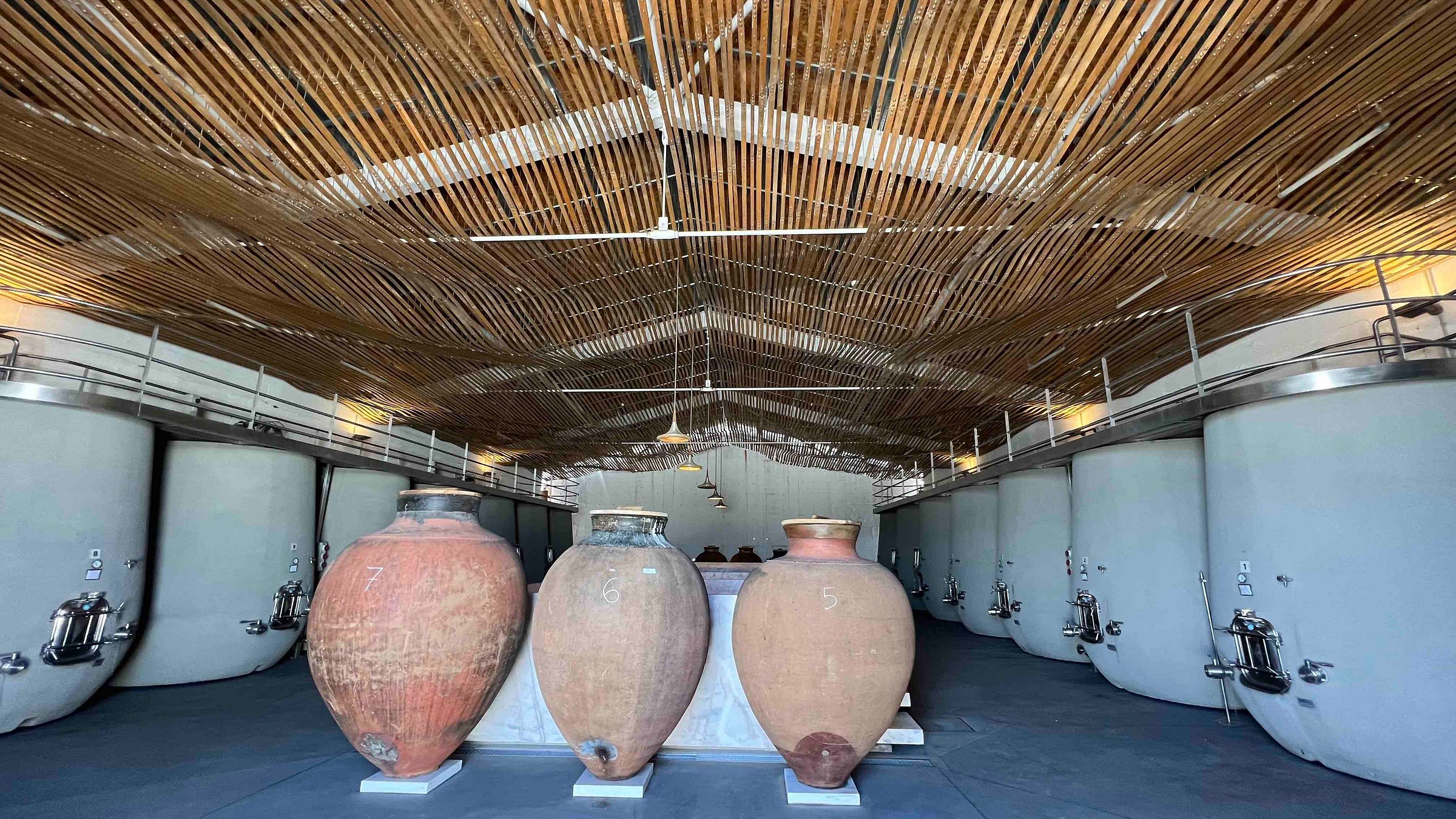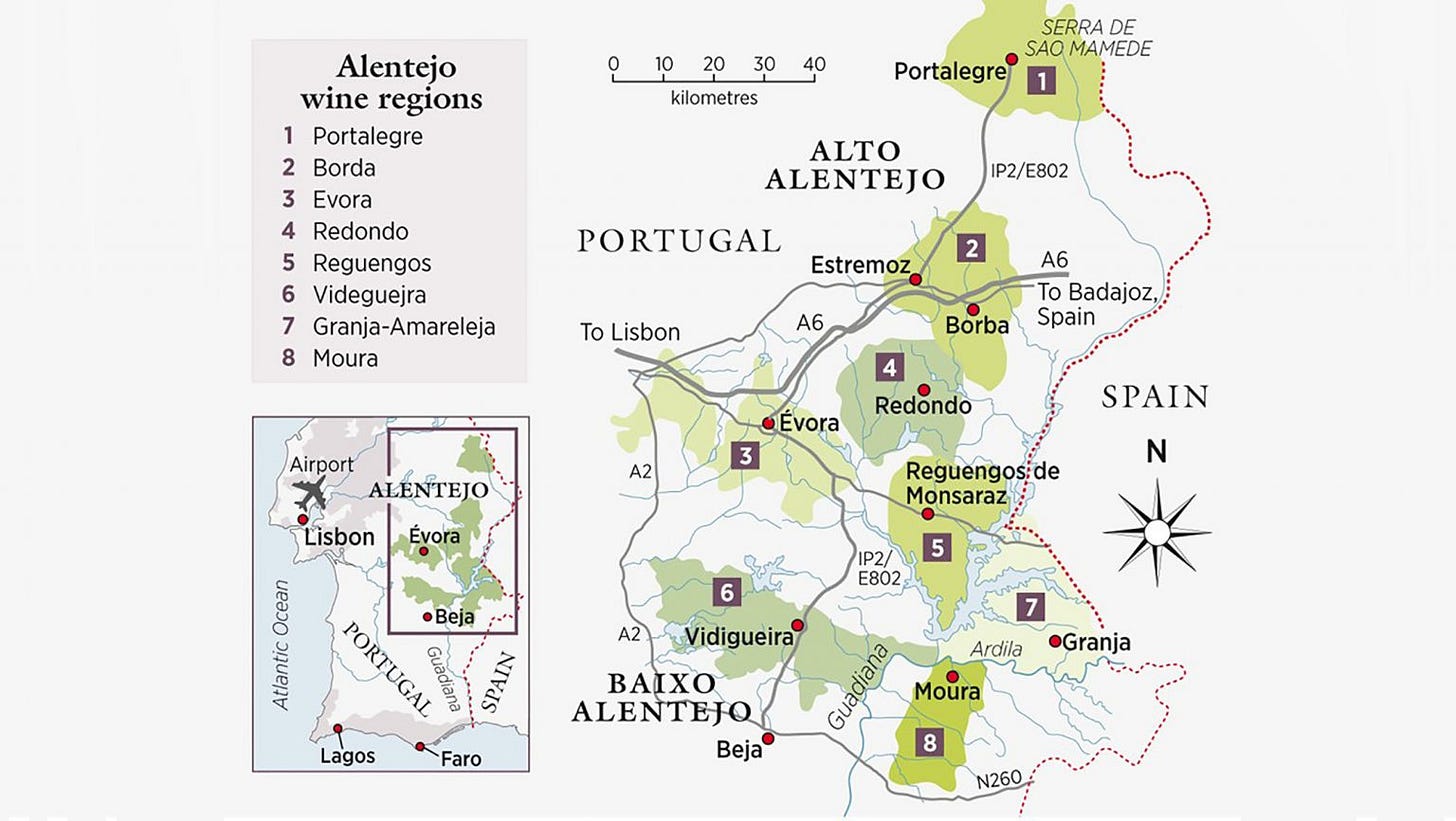Now it’s time to head deep into the heart of Alentejo wine country: the hot, dry interior where most of the region’s wines are produced.
This episode is centred around the Esporão winery and some of its iconic winemakers, to help tell the story of a wine revolution which has shaped the Alentejo over the past 40 years.

Portugal’s wine history goes back even further than the Romans, who brought large scale wine-making to the Iberian Peninsula.
The Catholic Church and its sacrament kept the vineyards producing, and after England fell out with France it came to Portugal for its wine…and Port was born.
During the four decades of dictatorship under António de Oliveira Salazar and the regime’s “Estado Novo” or “New State” plan, centuries of wine history in Alentejo were erased when vines were ripped out to be replaced by cereals…in a region never really suitable for grains.
In 1974 the Carnation Revolution brought the regime to an end, and after a few years of instability, the Alentejo – with its sunshine, rich soils and multiple microclimates – began to once again emerge as the home of amazing wines.
Drink along with our podcast series! If you want to buy Esporão wines in the US or UK there are links at the end of this post
José Roquette bought Esporão in 1973, but the post-revolutionary communist movement seized the property until it was returned in the mid 1980s, when he began re-planting, modernising, hiring, and producing great wine.
“It was something incredible,” says Luís Duarte, who joined Esporão in 1987 straight out of the very first oenology class at the University of Trás-os-Montes close to the Douro in Vila Real.
That marked the beginning of Portugal’s modern approach to winemaking.

“When I arrived we started building one of the most famous and beautiful wineries in Portugal, but it was very difficult to build in three months: below the ground with big tunnels – it was crazy,” Luís said.
A few years later he was joined by David Baverstock, an Australian winemaker who by then had met his Portuguese wife and had been in Portugal for a decade.
“In the early days, when I first came over here, it was very hit or miss,” said David.
“You’d buy red wine in a supermarket and it was maybe a little bit fizzy, a bit gassy or dirty or something because the malolactic fermentation hadn't been properly controlled. There were a lot of basic winemaking faults back then.
“A lot of it was just sort of handed down from generation to generation, there wasn't a lot known about the grape varieties, and suddenly they realised they've got these 250 indigenous grape varieties that no other country in the world has.”

Portugal’s entry into the then European Economic Community (EEC) in 1986 made a huge difference.
“The money just poured in: the roads got better, there was money for vineyards and wineries,” added David.
And the money was put to good use – investment in research, stainless steel tanks, temperature-controlled fermentation, university courses and the knowledge to grow the right grapes in the right places.
The region is now the biggest producer for the domestic market. Unlike the narrow terraced hillsides of the Douro, the wide rolling hills provide plenty of space for more vineyards and mechanised harvesting.
Deep below the ground, Esporão’s cellar is as impressive today with an amazing and refreshingly cool temperature despite the intense Alentejo heat.
The cavernous cellar space resembles a cathedral or a subterranean football field.
“Or a metropolitan station – an underground station?” suggested Sandra Alves, the third winemaker we spoke to for this lesson in wine history…and who gave us a tour of the iconic winery.
It’s a great place to visit in Reguengos de Monsaraz, and well set up for visitors, with tours, tastings and restaurant with a Michelin star and a Michelin green star for sustainability.
José Roquette’s son João took over the running of the winery and made another ambitious step in the 2000s when he decided the whole estate should become organic.
With more than 600ha of vines, Esporão is now one of the top ten largest organic vineyards in the world.
Esporão produces a whole range of wines in Alentejo from the famous mass-market Monte Velho to the Reservas, Private Selection bottles and the “Torre” wines which are only produced in exceptional years.
Named after the famous tower, they have only been released from the 2004, 2007, 2011 and 2017 vintages, picked up a lot of points from wine critics and sell for hundreds of euros.
All Alentejo’s eight DOC’s (Denominaçãos de Origem Controlada) nuzzle up to the border with Spain.
Any regional wines not produced inside a DOC are known as “Alentejano” wines.
“We started to follow the ideas that David brought from Australia – from the new world,” said Luís Duarte, of the time when Esporão started to experiment.
“When this happened it was very important for Portugal because it added a lot of people with knowledge of the new technology,” which Luís said led to increased confidence from investors that Portuguese wine was a good place to spend their money.
“We belong to the old world of wine but we are very new in terms of our knowledge,” especially when compared to places like France that didn’t suffer the disruption of dictatorship.

“The generalisation is still that Alentejo can produce very, very easy drinking commercial style wines in quite big volumes,” added David Baverstock.
“There's a general stereotype, particularly with the reds, that they're going to be a bit on the heavier side, they're going to have soft tannins...a fair bit of alcohol and they're going to be quite ripe fruit flavour.”
But he explained winemakers are now moving towards making fresher and more elegant wines which the different terroirs and better understanding of Portuguese grapes encourages.
“Alentejo is really drinkable wine, a really intense wine – at some stage really fruity. Almost exotic for an American market, but at the same time, it's gastronomic as well,” said Sandra Alves, looking out over the parched soil, the cork oak trees and the big skies.
“All the intensity that you see all around you...all this yellow and green and blue – I think the wines show these colours, all this intensity is everything very powerful, very intense, very unique.
“I would say that you need to taste to understand and you need to come here as well to understand what I'm talking about,” she said.

Of all the wines we’re drinking in this series, Esporão is one of the easiest for you to find outside of Portugal.
To order in the US contact Now Wine, or buy them directly from wine.com here.
And if you’re listening in the UK, you can buy Esporão wines here:
Please let us know how that goes…and we’ll see you next time for a lesson in grafting grapes and some wine classes for us at Plansel.

















Share this post